Saheli mehndi artist
phone :-
090287 77724
bridal mehandi :-
Bridal mehndi, also known as henna, holds a special significance in many cultures, especially in South Asia and the Middle East. It's an integral part of wedding celebrations, symbolizing love, happiness, and good fortune. Here's a brief overview:
Symbolism:
Mehndi is considered auspicious and is believed to bring luck and ward off evil spirits. It's applied to the bride's hands and feet in intricate designs, symbolizing joy, beauty, and spiritual awakening.
Tradition:
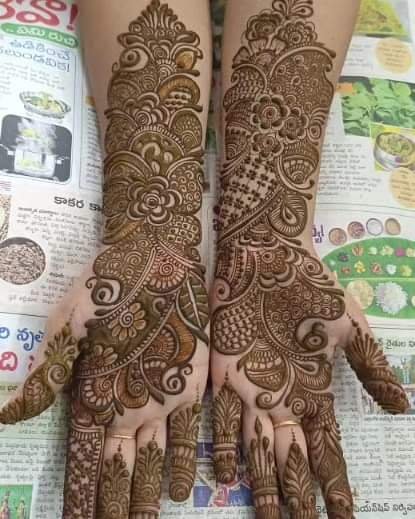
Bridal mehndi is a time-honored tradition passed down through generations. It's not just about adorning the bride; it's also a social gathering where family and friends come together to celebrate the upcoming union.
Designs:
Mehndi designs for brides are often elaborate and intricate, featuring patterns like paisleys, flowers, leaves, and geometric shapes. These designs can vary depending on the cultural background and personal preferences of the bride.

Customization :-
Brides often incorporate personal elements into their mehndi designs, such as the groom's name or initials hidden within the patterns, symbols representing significant moments in their relationship, or motifs that hold special meaning to them.


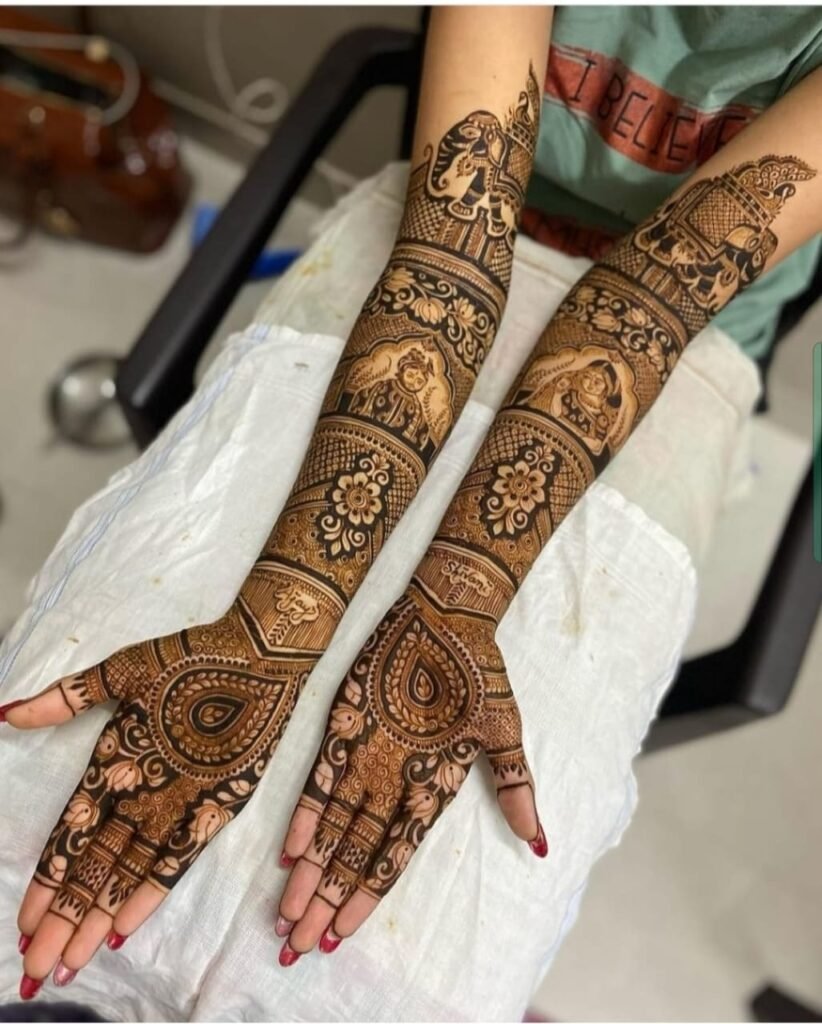
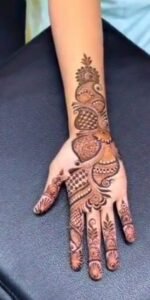
Color and Duration:-
After the mehndi is applied, the bride must wait for it to dry before gently scraping off the dried paste, leaving behind a deep orange stain. Over the next couple of days, the stain gradually darkens to a rich reddish-brown color, reaching its peak intensity on the wedding day. The duration of the stain varies from person to person but typically lasts for one to three weeks.
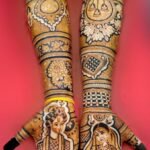
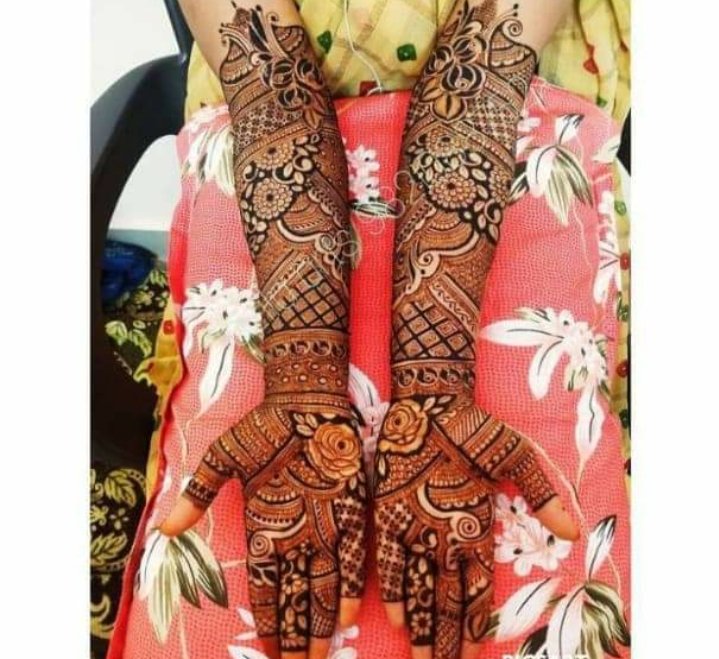
Add Your Heading Text Here Post-Wedding Rituals:-
In many cultures, there are specific post-wedding rituals associated with mehndi, such as the groom trying to find his name hidden in the bride's mehndi, or the bride waiting until the mehndi fades completely before stepping foot outside her new home.
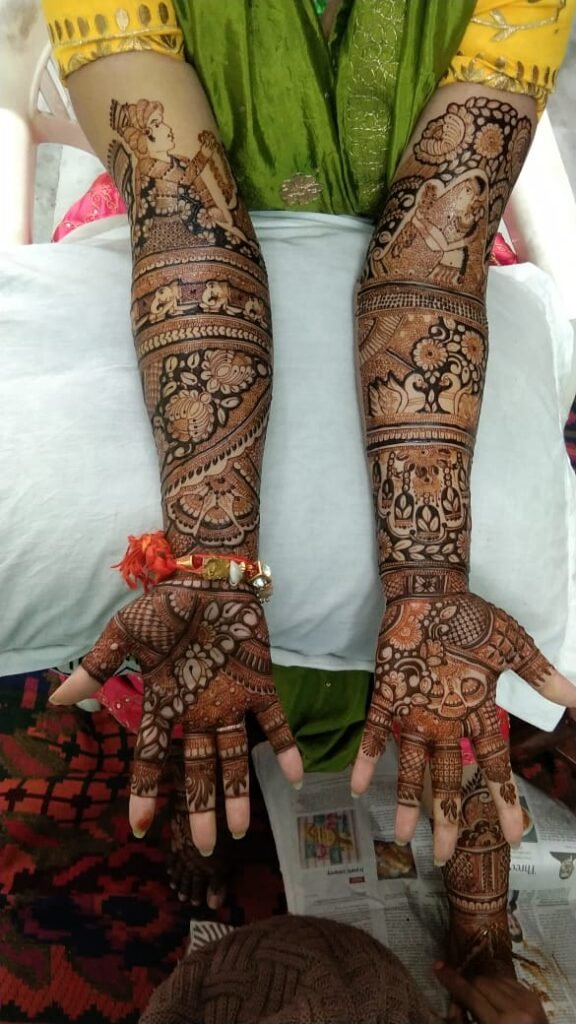
Application Process: -
Applying mehndi is an art form in itself, typically done by skilled mehndi artists who use special cones to create the designs. The process can take several hours, during which the bride sits patiently while the intricate patterns are drawn on her skin.
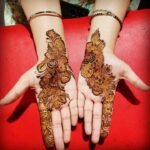

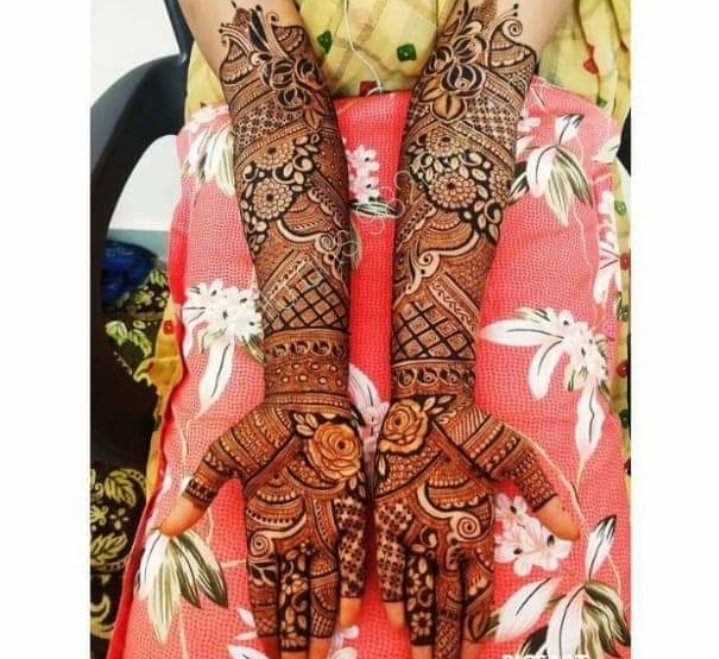
Floral Pattern:
Start by drawing a small floral motif in the center of the palm. This could be a simple flower with petals. Add some leaves and swirls around the flower to enhance the design

Index Finger Design:
Create a bold design on the index finger. This could be a series of diagonal lines or simple floral patterns extending from the base of the finger towards the tip.

Paisley Motifs
Draw paisley motifs (mango-shaped designs) on the sides of the palm. These can be large or small depending on your preference. Fill them with intricate patterns like dots, lines, or small flowers.

Finger Tips:
Decorate the tips of each finger with small dots or simple patterns. You can also add a small flower or swirl at the tip of each finger for a more intricate look.
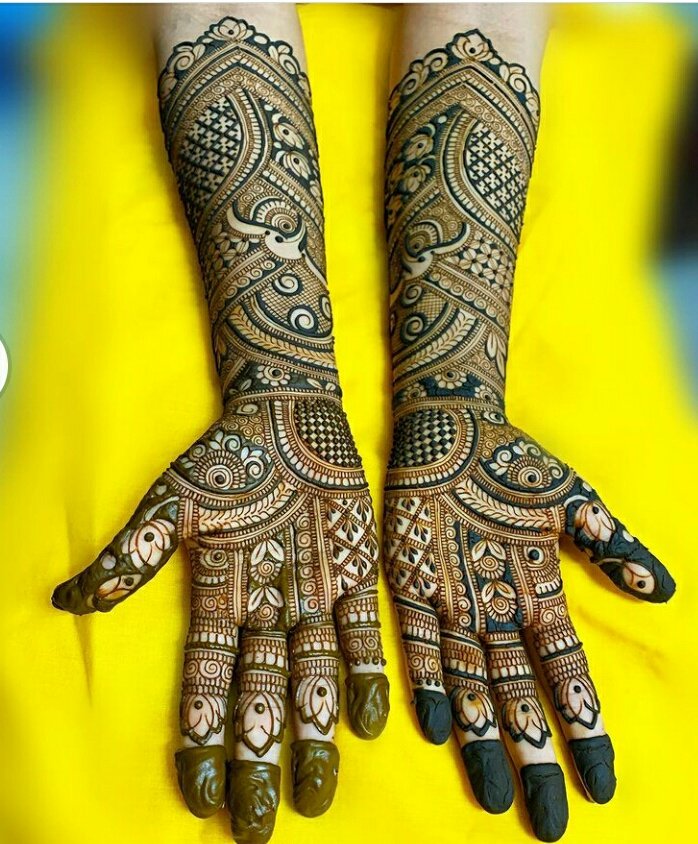
Mehndi is deeply rooted in tradition and symbolism. It's believed to bring good luck, fertility, and ward off evil spirits. Applying mehndi on the bride's hands and feet is considered auspicious and is an age-old tradition in many cultures.

Mehndi ceremonies are often held a day or two before the wedding and are accompanied by music, dancing, and celebrations. It's a time for the bride to relax and be pampered by her friends and family. In some traditions, the groom's initials are hidden within the intricate patterns, and he must find them on the wedding night, adding a playful element to the occasion.

Aftercare: After the mehndi paste dries and flakes off, the stain left behind gradually darkens over the next 24-48 hours, reaching its peak color before fading away naturally over the following weeks. To enhance the color and longevity of the design, brides often apply a mixture of sugar and lemon juice or a special mehndi sealant.
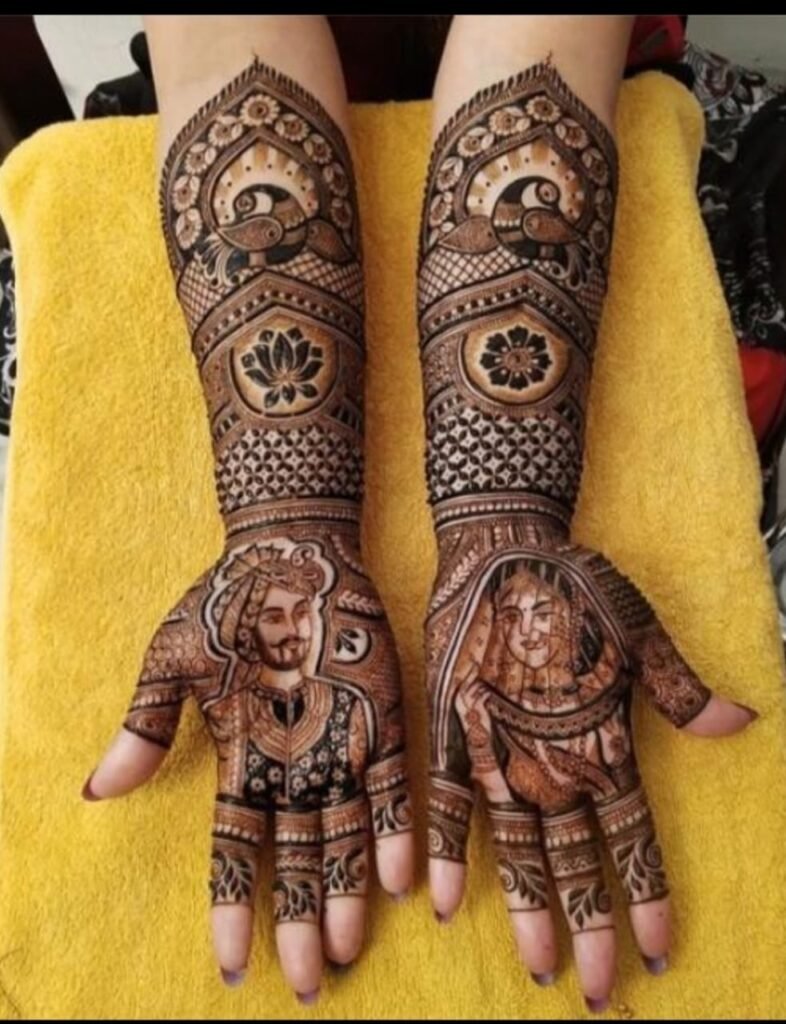
Wrist Bracelet
Extend a bold and intricate pattern from the base of the palm towards the wrist, creating a bracelet-like design. This can be a series of interconnected lines, dots, and small motifs.
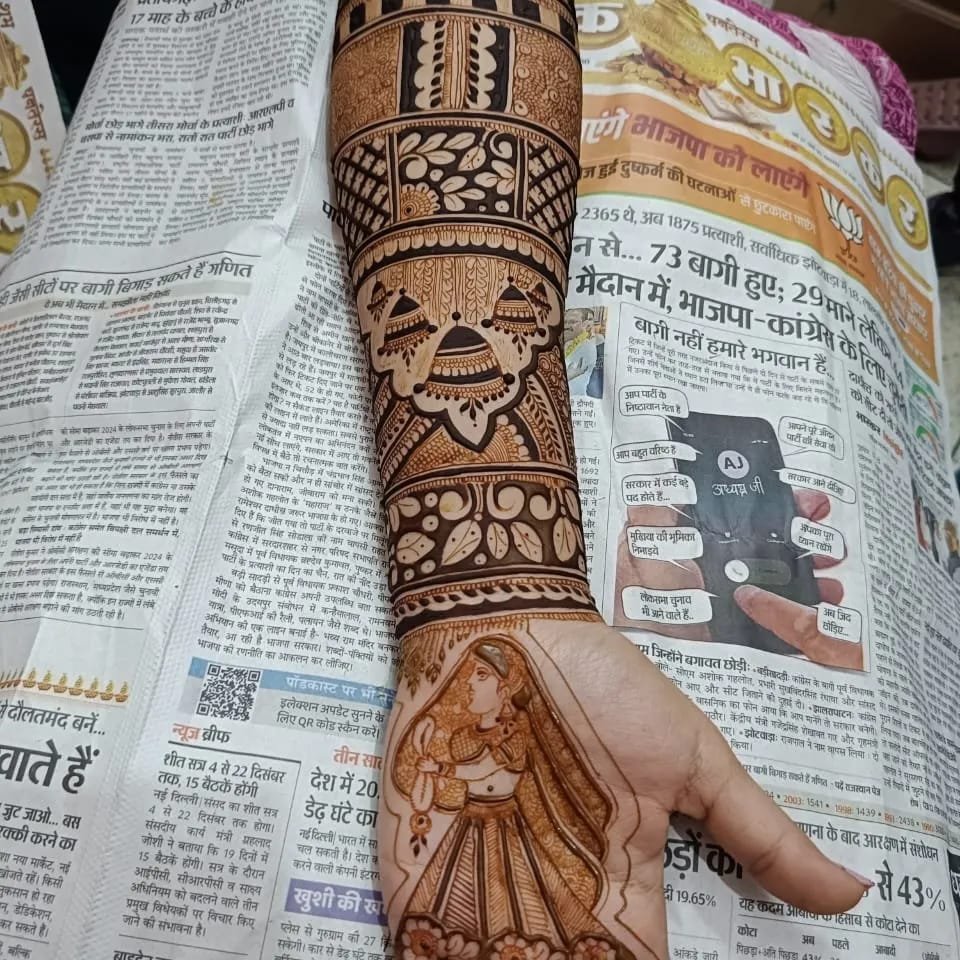
Bridal mehndi designs are intricate and elaborate, often featuring floral motifs, paisleys, peacocks, and intricate patterns. These designs can vary depending on cultural preferences and regional influences. Some brides also incorporate elements like their partner's initials or motifs symbolizing love and unity.
3. Application: Mehndi paste is traditionally made from finely ground henna leaves mixed with water, lemon juice, and essential oils to create a smooth, thick paste. This paste is applied to the skin using a cone or brush in intricate patterns. After drying, the paste is left on for several hours or overnight to allow the dye to stain the skin.

Significance: Bridal mehndi is not just a form of body art but a symbol of love, commitment, and celebration. It's a time-honored tradition that brings together families and communities to celebrate the joyous occasion of marriage.
Overall, bridal mehndi is a beautiful and meaningful tradition that adds an extra layer of beauty and cultural richness to wedding celebrations.

Once you've completed the main design, add dots or small circles in empty spaces to fill them up. This will give the design a more cohesive look.
Remember to let the mehndi dry completely before touching anything to avoid smudging. Once dry, gently scrape off the dried mehndi paste to reveal the stained design underneath.

As the design progresses, intricate patterns inspired by traditional henna art emerge, weaving their way across the hand in elegant symmetry. Geometric shapes, paisleys, and intricate lace-like patterns intertwine, creating a mesmerizing tapestry of beauty.
In the center of the palm, a stunning motif symbolizing love and union takes prominence. Perhaps it's a depiction of a bride and groom, their hands entwined in eternal commitment, or a majestic peacock, representing beauty and grace.

Engagement mehndi designs are often intricate and elegant, reflecting the joy and celebration of the occasion. Here's a description of a beautiful engagement mehndi design:
The design begins with delicate floral motifs adorning the fingertips, symbolizing new beginnings and growth. These flowers are intricately detailed, with swirling vines extending gracefully along the fingers, adding a touch of whimsy and romance.
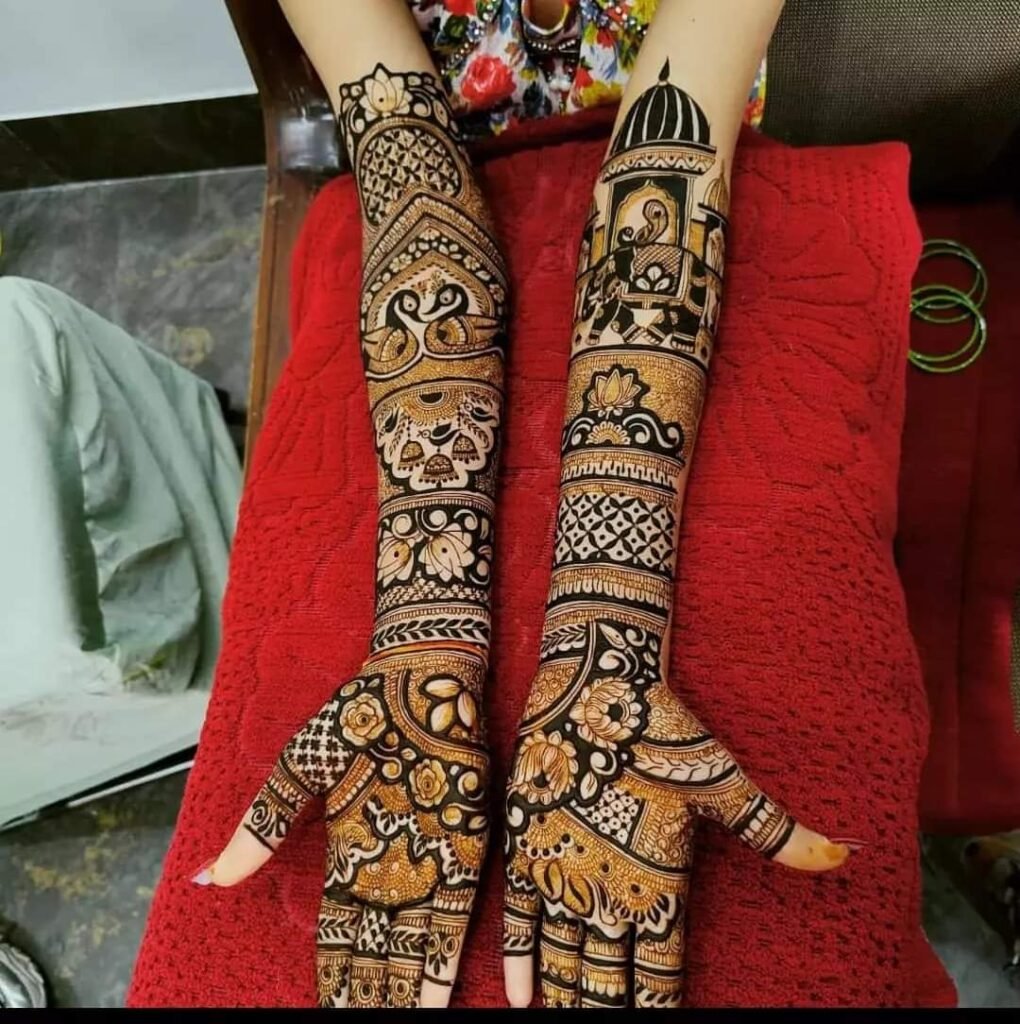
The wrist is adorned with ornate bands of henna, framing the hand like delicate jewelry. These bands may feature geometric patterns, floral motifs, or even the couple's initials intertwined in a timeless embrace.
Throughout the design, negative space is used strategically to enhance contrast and highlight the intricate details. This balance of filled and empty spaces adds depth and dimension to the overall composition, elevating the design to a work of art.
As the mehndi dries and sets, its rich reddish-brown hue deepens, imbuing the design with a sense of warmth and vitality. With each passing moment, the intricate patterns become more pronounced, culminating in a breathtaking display of bridal beauty.